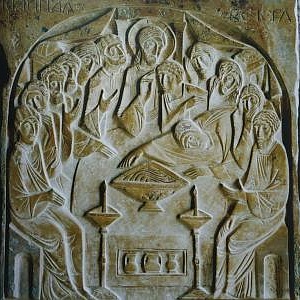 The Russian Academy Of Arts
The Russian Academy Of Arts The Russian Academy Of Arts
The Russian Academy Of Arts| 22.05.2019 - 23.05.2019 |

The Research Institute of Theory and History of Fine Arts of the Russian Academy of Arts invites you to take part in the international research conference “Ways of Development of Today’s Orthodox Religious Art: Poland (Bialystok) and Russia. The Regional Identity in the Unity of Artistic Tasks”, that will take place in the White Hall of the Russian Academy of Arts (21 Prechistenka street, Moscow) on May 22-23, 2019.
Applications (name and surname, theme of the paper, position and working place, scientific degree, e-mail, telephone) shall be sent not later than April 15, 2019 to the Conference
Organizing Committee: drevrus-niirah@yandex.ru. Tel: 8 985 980 8548
The traveling and accommodation expenses are the responsibility of the sending party.
Topics to be discussed:
- in the modern stylistic form: revelation, spiritual meeting with the God or part of the magnificent sacral space. The canonicity as a basis of Orthodox art and new expressive means for embodiment of the deep meaning of the icon depending on the skill level of the executor. The qualitative gradations of artworks: from the craft copy to the author’s masterpiece in accordance with the old icon painting tradition;
-the diversity of artistic reference points in Russian religious art of these days: Byzantium, monuments of the 16th – 18th centuries academic icons and paintings. The source selection dependence on the requirements of the customer and artistic orientation of masters. The problem of the icon original;
-key innovations in modern religious art: the revival of old recipes for encaustic, innovations on mosaic art, new life of cloisonné enamels on religious topics basing on modern technologies;
-nontraditional materials and technologies in religious sculpture;
-schools of skills upgrading – monastic and secular. The formation of images of the newly declared saints. Iconography and stylistics.
-the experience in the interpretation of the early Christian traditions in the decoration of churches;
-art metal as a liturgical element of temple interiors;
-the diversity of typological guidelines in Russian church architecture of these days. The task of artistic “development” of the new space;
-the understanding of the liturgical Canon in the Orthodox regions of East European countries (Poland – Bialystok). The location of Poland on the religious border between the Latin and Greek and Slavic traditions;
-the inevitability of mutual interest in the period of today’s ecumenical consciousness. The exchange of some values and forms of religious cult;
-the saving role of the icon as a way of returning Bialystok to the Byzantine tradition;
-the peculiarity of the early architecture of Bialystok churches – the combination of Byzantine classics with Russian avant-garde as a basis of Polish Orthodox churches of these days;
-the experience exchange – Polish and Russian masters abroad;
-stylistic nuances in works of Russian religious artists abroad. Consideration of the local traditions of the “inviting environment”;
-expediency of the establishment of the Center for Coordination of Work by Modern Icon Painters on the basis of the Russian Academy of Arts and its educational institutions;
-the role of the Russian Academy of Arts in the preservation of traditions of monumental painting, icon painting, temple mosaics and cloisonné enamels. The world famous Russian masters from the Russian Academy of Arts whose works are known in all the regions of the Orthodox world.